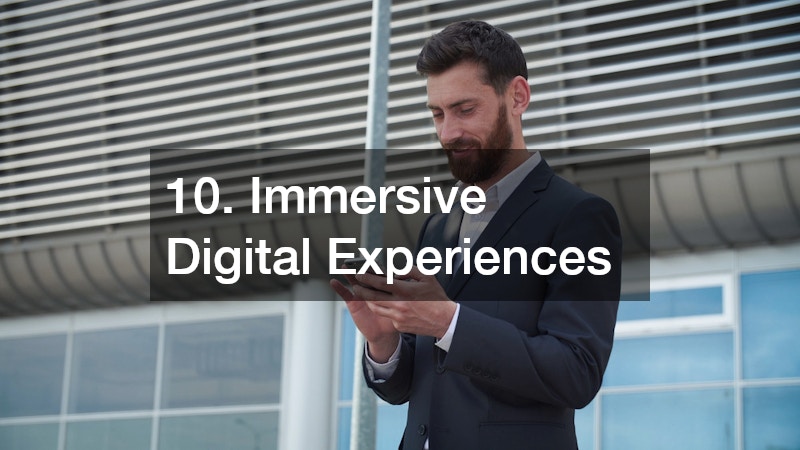In the ever-evolving landscape of business, staying ahead of the curve is essential for long-term success. As technology continues to transform the way we work, companies across various industries have been adopting innovative approaches to enhance efficiency, customer engagement, and sustainability. This article explores AI-first workflows and other trends driving change across different sectors, from roofing businesses to custom printing services. Let’s delve into these groundbreaking approaches and see how they’re reshaping the business world.
1. AI-First Workflows

This strategy has significantly influenced AI-first workflows, particularly in the roofing business. Artificial intelligence not only assists in project planning but also enhances safety by predicting potential risks. With AI, roofing businesses can streamline communication, leading to more efficient work processes and improved client satisfaction.
AI-first workflows allow roofing businesses to automate tedious administrative tasks. By utilizing AI, roofers can schedule appointments, dispatch teams, and maintain inventories with minimal human intervention, saving time and reducing errors. The integration of AI has resulted in reduced costs and improved service quality for roofing professionals.
The incorporation of AI into the roofing business doesn’t stop at logistics; it extends to innovative customer interactions. AI-powered chatbots provide round-the-clock assistance, ensuring clients receive immediate responses to inquiries. These advancements highlight the transformative power of AI in driving the business forward.
Furthermore, AI-backed image recognition tools allow roofing professionals to assess damage more accurately. Drone footage combined with AI analysis can detect hidden structural issues and generate precise repair estimates. This empowers contractors to deliver faster, more transparent services, boosting trust and credibility. As roofing contractors continue embracing these technologies, the industry is shifting toward a more predictive, data-informed approach—reducing surprises and improving project outcomes.
2. Hyper-Personalized Customer Experiences
Waterproofing contractor services are at the forefront of delivering hyper-personalized customer experiences. By leveraging data analytics, contractors can tailor solutions to meet specific client needs. Personalized services result in higher customer satisfaction and a stronger competitive edge.
Waterproofing businesses can tap into the vast potential of technology to initiate customized sales pitches. By understanding client preferences and project specifics, contractors can offer tailored solutions that directly address individual requirements. This level of personalization not only boosts client loyalty but also contributes to long-term business growth.
With the support of AI and customer-focused strategies, waterproofing contractor services can automate customer interactions while maintaining a personal touch. From sending personalized maintenance tips to providing virtual consultations, technology ensures customers feel valued and understood. This approach solidifies the service provider’s reputation as a reliable partner in waterproofing needs.
Moreover, predictive analytics can alert homeowners to potential moisture issues before they develop into costly problems. This proactive communication strengthens trust and positions contractors as experts who genuinely care about long-term property health. For an industry typically seen as reactive, this shift toward personalized, preventative service is game-changing.
3. Remote-Hybrid 2.0
The concept of remote and hybrid work is reshaping the work model in local natural stone supply businesses. By adopting remote-hybrid 2.0 strategies, businesses can effectively manage sales and logistics operations. This new model combines the flexibility of remote work with the essential on-site coordination required in the supply business.
For the local natural stone supply business, remote-hybrid 2.0 offers immense benefits. Employees can conduct virtual tours and consultations with clients, eliminating the need for traditional face-to-face meetings. This model not only saves time but also expands the geographic reach of the business.
The advancement of communication tools facilitates seamless collaboration between office and on-site teams. By integrating cloud-based tools, businesses can manage orders, track deliveries, and ensure timely responses to client queries. This approach reinforces operational efficiency while maintaining high service standards.
Additionally, digital asset management systems allow teams to share high-resolution stone samples, design inspiration boards, and architectural previews with clients instantly. This provides a premium buying experience even for remote customers and supports a more agile supply-chain model that adapts to fluctuating demand patterns.
4. Sustainability as a Core Metric

In the domain of estate planning lawyers, business sustainability has become a core metric for success. Clients are increasingly prioritizing eco-friendly choices, and law firms are adapting to this demand. By incorporating sustainable practices into operations, estate planning lawyers demonstrate commitment to ethical progress.
Integrating sustainability into estate planning extends to the recommendations lawyers offer their clients. By advising on environmentally conscious investments and philanthropic endeavors, firms align with client values while ensuring legacy planning is forward-thinking. This focus on sustainability sets progressive law firms apart in a competitive market.
Estate planning lawyers can also leverage green technology to minimize their environmental footprint. Digital documentation and cloud storage reduce paper usage, aligning law firms with sustainable business practices. By prioritizing sustainability alongside remote work, these professionals establish themselves as leaders in the legal sector.
Modern clients increasingly expect law firms to reflect their environmental values. Whether it’s reducing office waste, eliminating physical mailers, or adopting renewable-powered cloud systems, sustainability is now viewed as a marker of professionalism—not just preference.
5. Automation of Repetitive Tasks
Fifth is driving the trend of automating repetitive tasks, benefiting equipment rental businesses immensely. By automating invoicing, inventory management, and customer correspondence, these businesses achieve higher productivity levels. This shift reduces labor costs, minimizes human error, and allows staff to focus on value-added services.
Equipment rental businesses are embracing automation to enhance customer interactions. Automated booking systems improve the customer experience by simplifying order processes and offering real-time availability. This convenience attracts more clients and enhances customer satisfaction.
Additionally, automated systems enable predictive maintenance, ensuring equipment is serviced before issues arise. This proactive approach reduces downtime and extends the lifespan of rental assets. By integrating automation strategies, equipment rental businesses can operate more efficiently and competitively.
Automation also enables detailed usage tracking, allowing businesses to bill more accurately and understand which equipment drives the most revenue. As these insights accumulate, companies can refine purchasing decisions and adjust pricing models to match customer behavior—modernizing the rental process from the inside out.
6. Enhanced Cybersecurity and Zero-Trust Models
With the adoption of automation, enhanced cybersecurity and zero-trust models have become essential for Business Printing Services. In today’s digital environment, protecting sensitive client data is a top priority. Zero-trust models assume that no user or system should be automatically trusted, ensuring a more secure business operation.
Business Printing Services are leveraging advanced cybersecurity measures to safeguard client information. By implementing multifactor authentication and encryption, companies protect against data breaches and unauthorized access. These measures bolster client confidence and ensure regulatory compliance.
Beyond protecting data, zero-trust models enhance the operational integrity of Business Printing Services. By continuously monitoring user behavior and system activity, businesses can identify and mitigate potential threats before they escalate. This forward-thinking approach anchors the movement in the realm of cybersecurity.
As printing services handle increasingly digitized assets—contracts, proofs, proprietary designs—security now shapes customer perception as much as print quality. Businesses that demonstrate strong cybersecurity become preferred partners, especially for corporate clients with strict compliance requirements.
7. Composability and Modular Tech Stacks

In the realm of dumpster rental businesses, composability and modular tech stacks are becoming essential tools for modernization. By employing these strategies, dumpster rental businesses can create customizable systems to manage bookings, logistics, and billing. This flexibility allows businesses to adapt quickly to evolving market demands.
The adoption of modular tech stacks enables dumpster rental businesses to integrate new technologies seamlessly. With a focus on composability, businesses can easily swap out components to include additional features or improve existing functionalities. This agility positions companies to respond promptly to industry shifts.
These modular systems also support scalability, enabling dumpster rental businesses to expand operations without overhauling the entire tech infrastructure. With composability, businesses can optimize operations and drive efficiency while aligning with modern digital architecture. This adaptability ensures competitiveness and sustainability in the marketplace.
This also means that as environmental regulations change—often rapidly in waste management—businesses can plug in new compliance tools or reporting modules without friction. Tech stacks built on modularity age more gracefully and keep companies future-ready.
8. Voice-Driven Interfaces
The integration of voice-driven interfaces is a significant trend impacting local moving companies. These interfaces facilitate hands-free operations, allowing movers to access information and instructions without interrupting their workflow. This advancement enhances efficiency and productivity on the job.
Local moving companies can utilize voice-driven technology to improve customer service as well. By providing clients with instant voice-based responses to inquiries, businesses elevate the client experience. This technological shift results in faster resolution times and increased satisfaction levels.
Additionally, voice-driven interfaces support inventory management and communication systems within local moving companies. By employing voice commands, movers can track inventory and coordinate logistics effortlessly. These innovations underscore the importance of embracing business trends to refine service delivery.
The technology also reduces friction during hectic moving days—when workers can’t pause to type or navigate screens. Voice tools streamline job checklists, safety confirmations, and recorded notes, ensuring better documentation and smoother team communication.
9. Edge Computing Adoption
Local wildlife removal businesses are harnessing the potential of business trends by adopting edge computing solutions. Edge computing processes data closer to the source, reducing latency and bolstering real-time decision-making capabilities. This technology is invaluable in dynamic environments where immediate response is critical.
The implementation of edge computing in wildlife removal operations enhances field service accuracy. By processing data in real-time, technicians can make informed decisions, increasing success rates in wildlife management. This immediate insight ensures humane and effective mitigation strategies.
Beyond operational benefits, edge computing facilitates swift communication within teams and with clients. Wildlife removal businesses can convey updates and receive feedback instantly, enhancing service reliability. This technological advancement aligns with advanced computing strategies by optimizing resource utilization and reducing response times.
As smart sensors become more common—monitoring traps, detecting motion, or identifying species—edge computing ensures these tools function reliably even in remote or low-connectivity environments.
10. Immersive Digital Experiences

In the custom printing business, the creation of immersive digital experiences is transforming client interactions. By using virtual reality (VR) and augmented reality (AR) technologies, businesses provide clients with interactive product previews. This innovative approach allows customers to visualize end products before committing to purchases.
Custom printing businesses create virtual showrooms that engage customers and provide personalized experiences. Through AR applications, clients can see how printed designs will look in their environments, enhancing informed decision-making. This engagement deepens customer relationships and fosters brand loyalty.
Immersive digital experiences also empower marketing campaigns in the custom printing industry. VR demonstrations and interactive presentations captivate audiences, creating memorable brand interactions. By adopting these experiential technologies, custom printing businesses can differentiate themselves in a highly competitive market.
These capabilities also streamline revisions—clients can view prototypes instantly, reducing back-and-forth communication and speeding up delivery timelines. As demand for customized merchandise rises, immersive pre-visualization becomes a powerful differentiator.
As we navigate these transformative times, the importance of embracing emerging business trends and related strategies cannot be understated. The rapid pace of technological advancement is reshaping industries of all kinds, making innovation not just an advantage but a necessity for long-term resilience. From AI-driven processes in roofing businesses that streamline operations and enhance accuracy to immersive technologies revolutionizing custom printing companies, businesses across every sector are reaping the benefits of modernization. These innovations enable organizations to work smarter, deliver more personalized solutions, and respond more effectively to customer expectations that continue to grow more sophisticated each year.
By adopting forward-thinking approaches that prioritize efficiency, adaptability, and digital integration, companies can achieve sustained growth even as markets evolve. Modern tools empower teams to make data-informed decisions, reduce manual workload, and create memorable customer experiences that set them apart from competitors. This commitment to progress ultimately fuels higher customer satisfaction, increased loyalty, and a robust competitive advantage in the fast-paced world of commerce—an environment where staying stagnant is no longer an option. Businesses that embrace these changes today position themselves to thrive in the marketplace of tomorrow.
In addition, these modern strategies are helping organizations future-proof their operations by increasing adaptability, improving scalability, and fostering stronger connections with customers who expect seamless, technology-driven experiences. Companies that invest in these advancements position themselves to respond quickly to market shifts, economic challenges, and evolving consumer demands. As digital transformation accelerates across all industries, businesses that remain open to experimentation and continuous improvement will lead the way—setting new standards for efficiency, sustainability, and customer engagement in 2025 and beyond. Ultimately, the organizations that embrace innovation today will be the ones shaping industry expectations tomorrow, redefining what success looks like in a rapidly evolving global marketplace.

